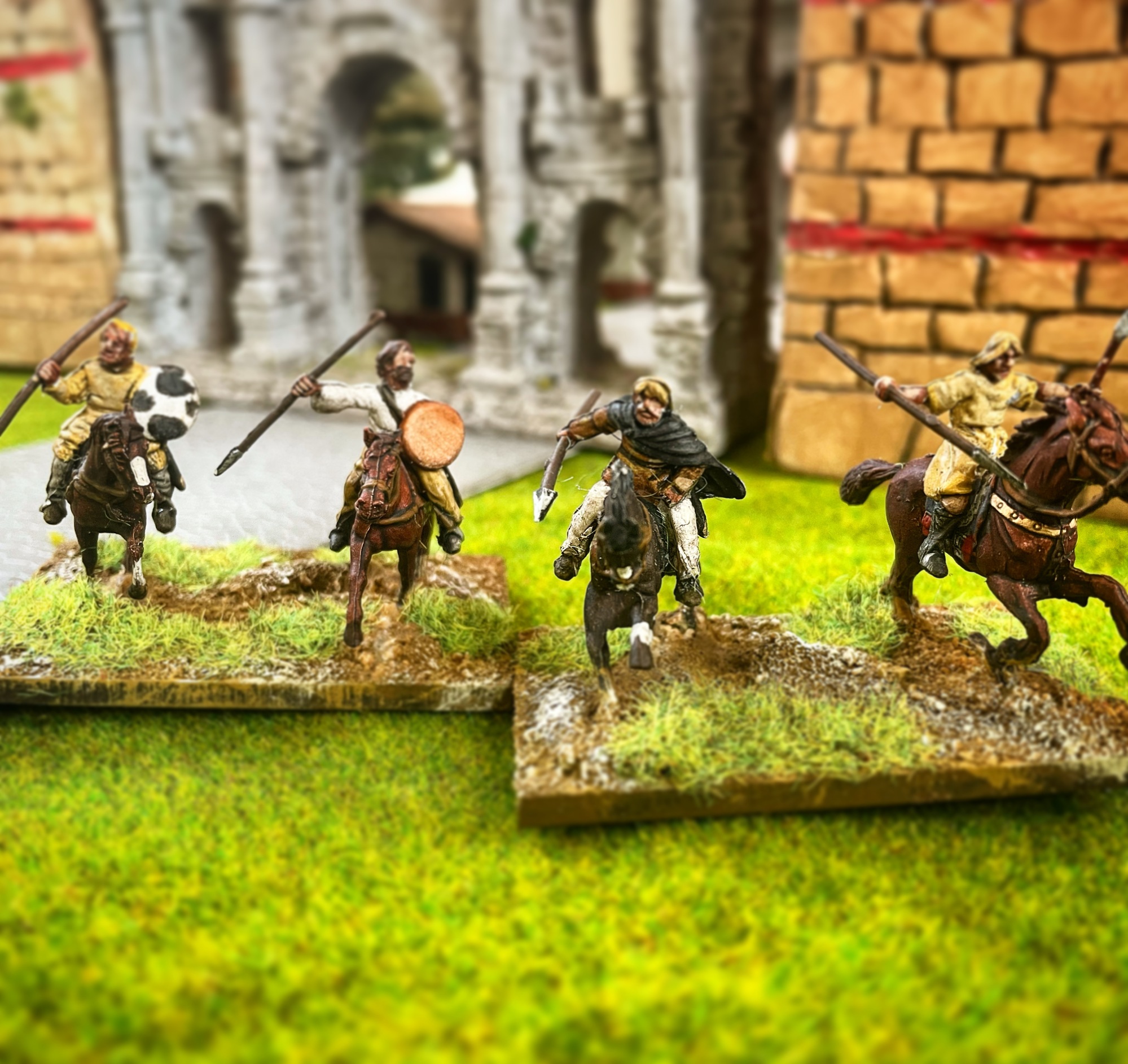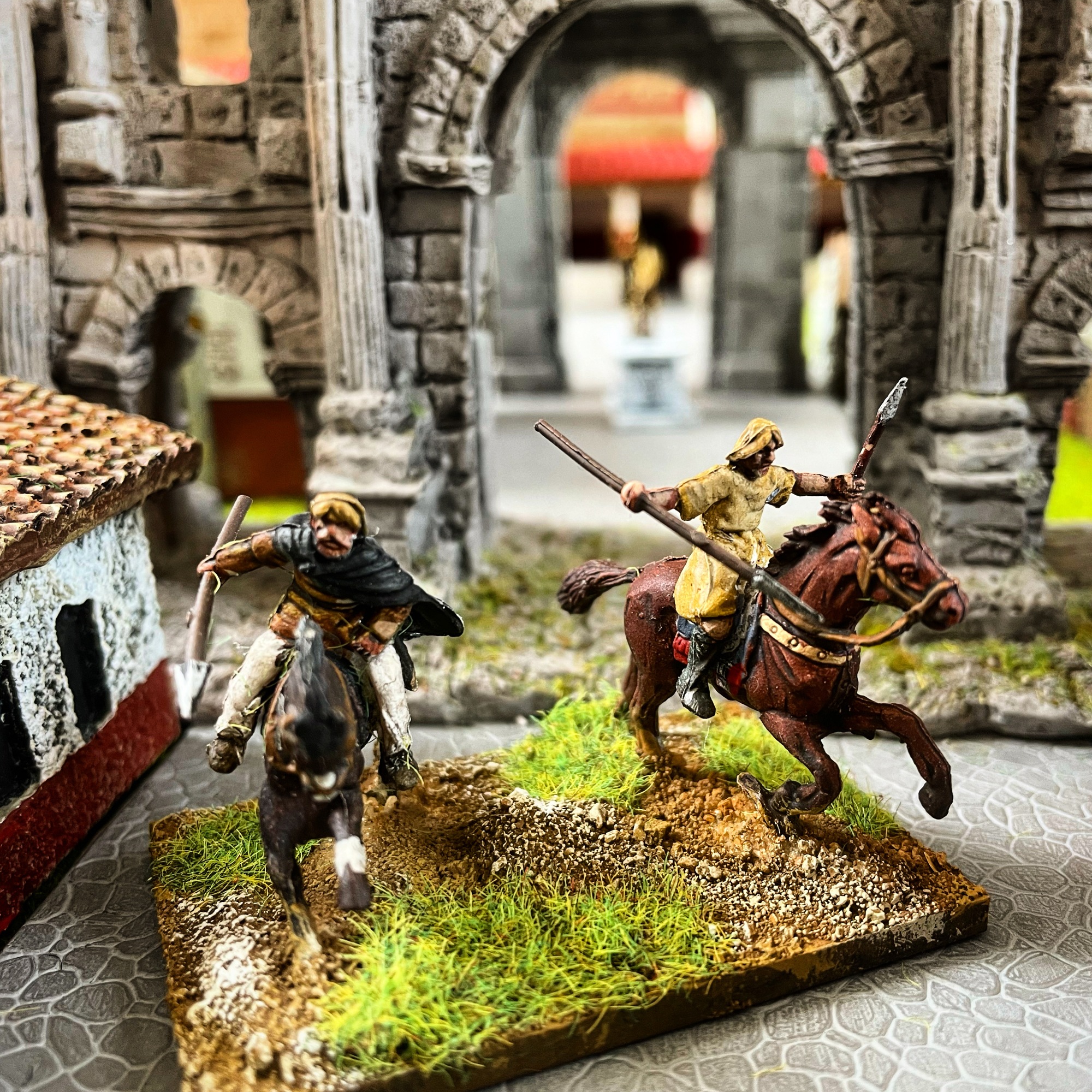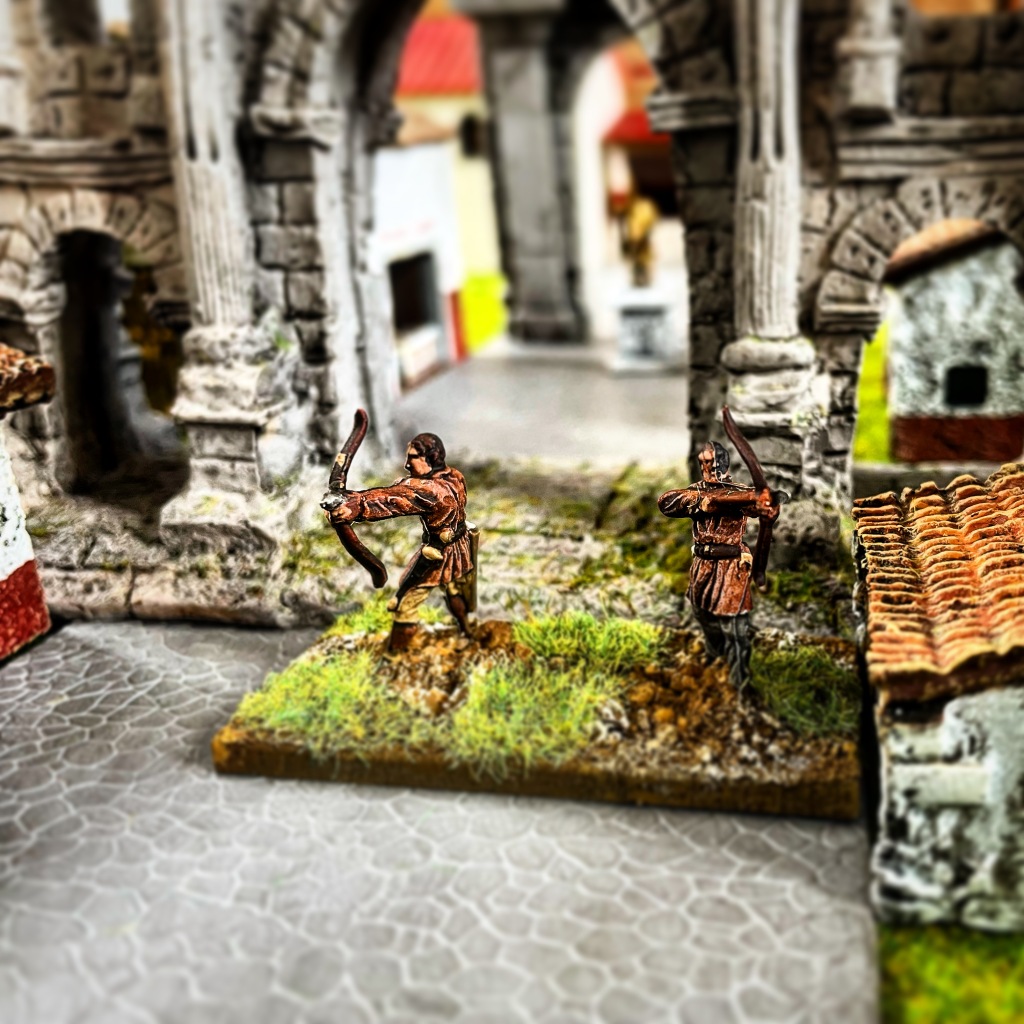It is time for...
Preview number three : skutatoiSkoutatoi is a bad greek translation of a latin word, scutati, wich means shield bearer.
It is the new name (with stratiotai) of the roman infantry. We don't hear any more of legio, now the units are called "numerus" or "bandon" (this one more for cavalry).
Numerus means precisly "unit", in a generic sense. During the early roman empire, a numerus was a kid of warband, composed by foreigners - barbarians. Now every unit is a numerus.
The skoutatoi are still reliable heavy infantry, but there is no comparison with the great roman legionnaires form, let's say the republic to the Severes dynasty.
Now the skoutatoi have lost for at least two centuries the incredible tactical plasticity of their ancestors, capable of adopting in a midlle of a battle combat formations of an incredible complexity.
they are now fighting, and it is believed that this "degeneration" began in the 4th century, in a so-called hoplitic mode. It is a question of holding a line, in several rows. Shields against shields, the lance pointed forward. Naturally, the skoutatoi no longer have a pilum, which breaks at the first shock. They are equipped with a lance, a long sword, the spatha (forget the gladius: it was only useful for elite fighters, formidable swordsmen capable of facing their opponent in personnal close combat), which allows to reach his opponent above his shield. The first ranks are heavily equipped, less those behind, a good part of which are made up of archers and javeliniers responsible for "watering" the ennemies.
they rarely make the decision on the battlefield, but they are very useful for at least two reasons: thanks to their discipline, to their training, they serve as a foothold in pitched battle, behind which the cavalry can reform as needed. In many battles, this heavy infantry has kept the Roman camp strong when the going gets tough. Finally, in the war of position of the time, or almost everything is decided by the siege and the capture of enemy towns and fortresses, these units were the best to guard the walls.
We are lucky, it is one of the last times that we are able to know (for some at least) which units precisely were able to take part in the Roman wars.
The way to find out is quite original. Until then, we knew the names of the units (and we know with extreme precision the use of the Roman legions for at least 4 centuries!) By three means: the innumerable epigraphic traces left by the Romans, official documents (think of the notitia dignitatum, which has come down to us almost completely, which lists all the Roman military units under Honorius and Arcadius, with their name, their location, their classification, their operational specialty and the pattern painted on their shield !! ) and of course literature. Unfortunately, the latter is of little help to us. Henceforth the authors are civilians who are no longer familiar with military matters, and quite incapable of knowing the name of a particular unit. The official documents reached us in smaller quantities (mainly papyri remarkably preserved in Egypt), and the Roman fashion of engraving blocks of marble was gradually lost.
luckily, the Roman soldiers of the time were very pious ... and very legalistic. We therefore know the units present on a specific date in a given city mainly through two means: the signing of contracts between individuals for which a soldier, a trusted man, was invited to be a witness, and by donations to churches from these soldiers , duly engraved in the stone of the churches.
I have therefore taken the list of units whose presence is attested at the time in Italy, sought in the notitia to have their operational specialty and their shield pattern, and here to you two units carried out:
The Primi theodosiani and the felices theodosiani. Two combat units, which we are almost sure were created between 380 and 395! Two centuries later, they were still fighting ... And for one of them, as I wrote previously, we still have its trace ... in the 10th century!
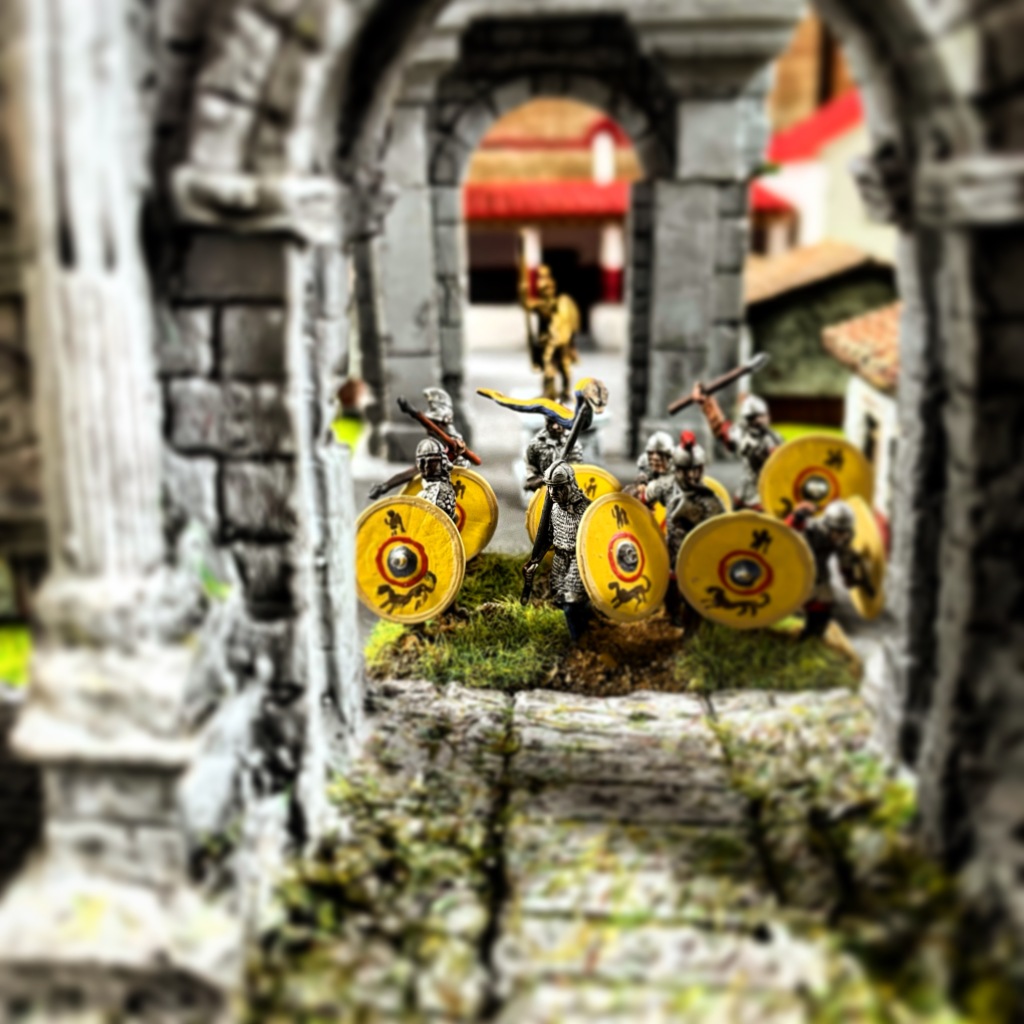
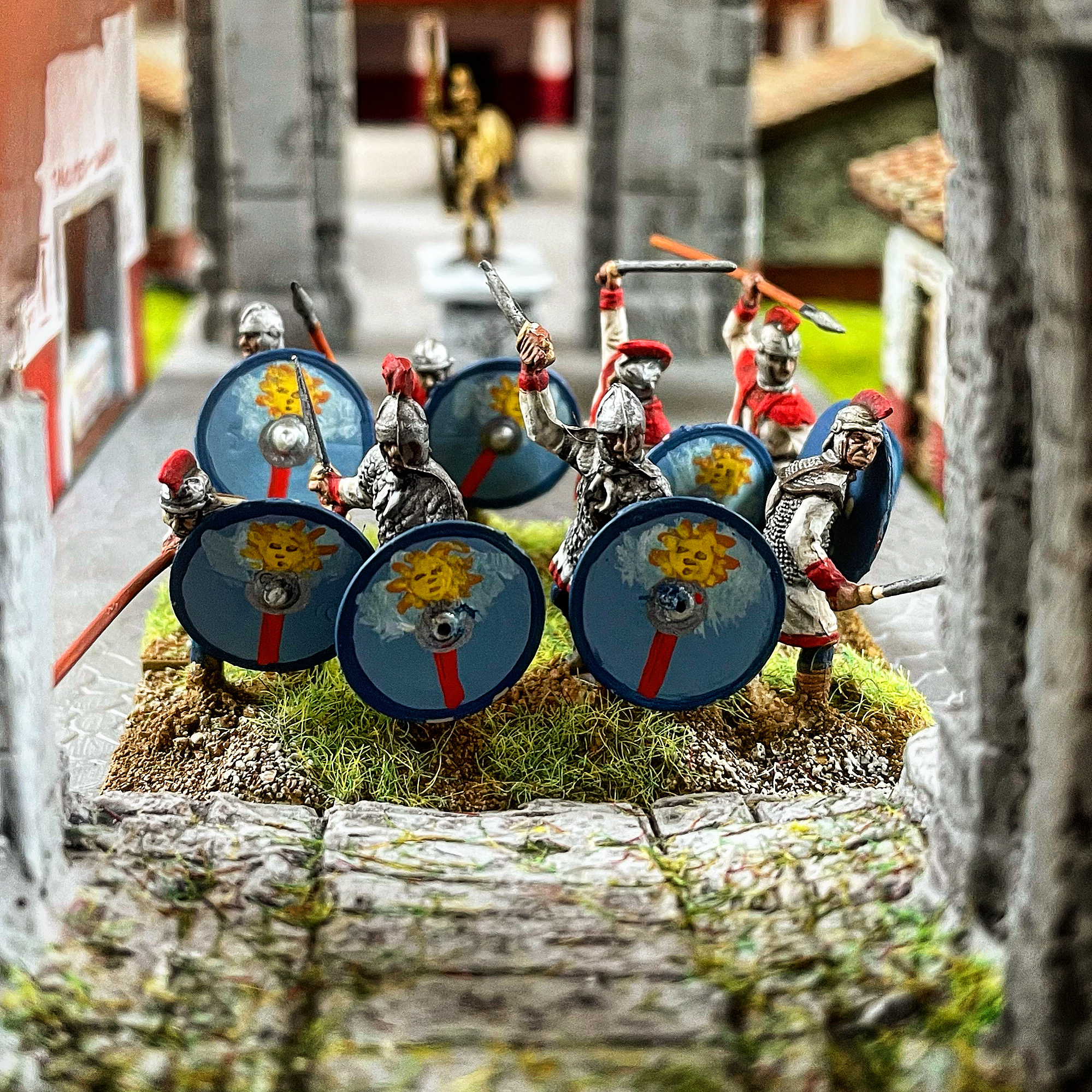
some artwork i used as inspiration :

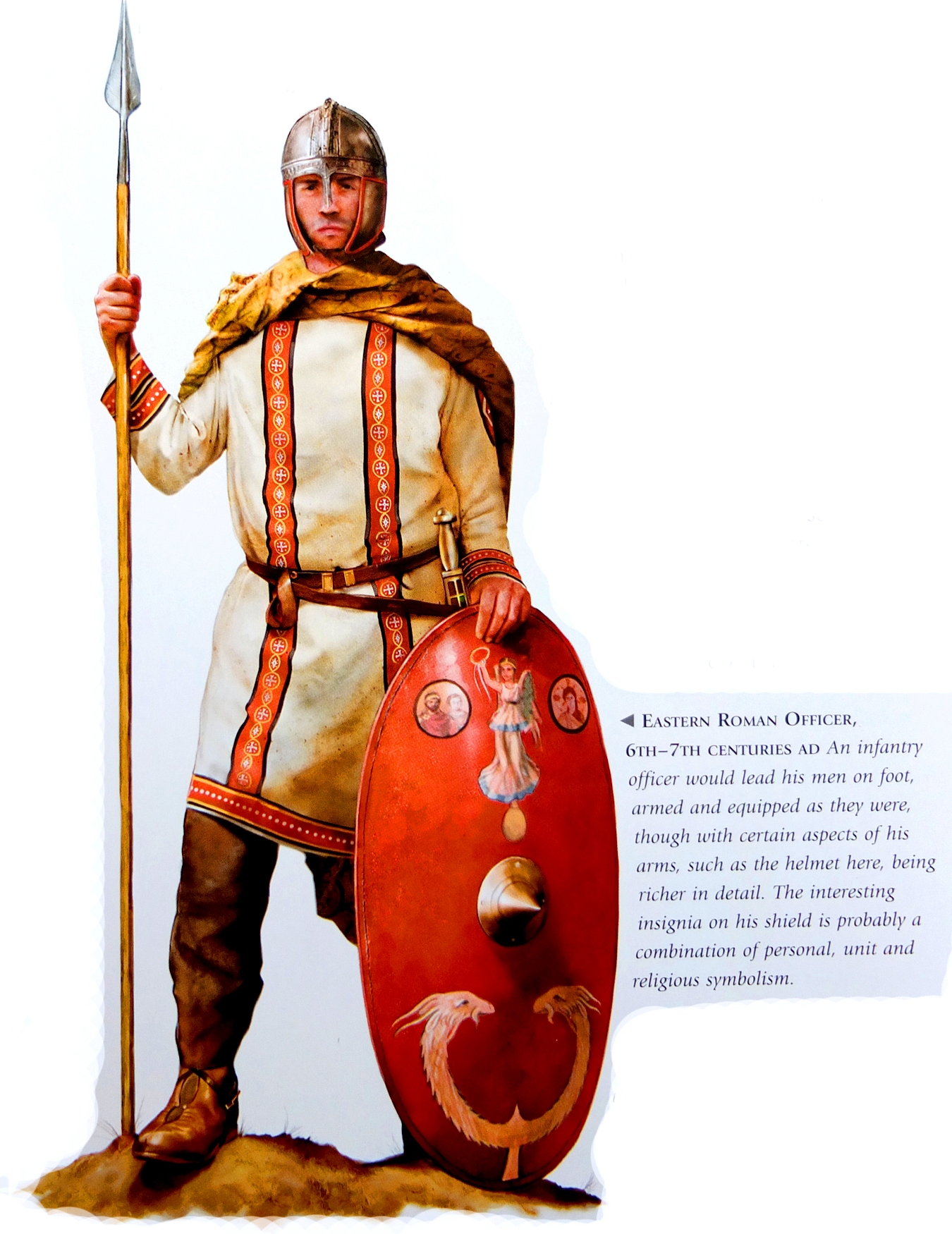

their shield pattern





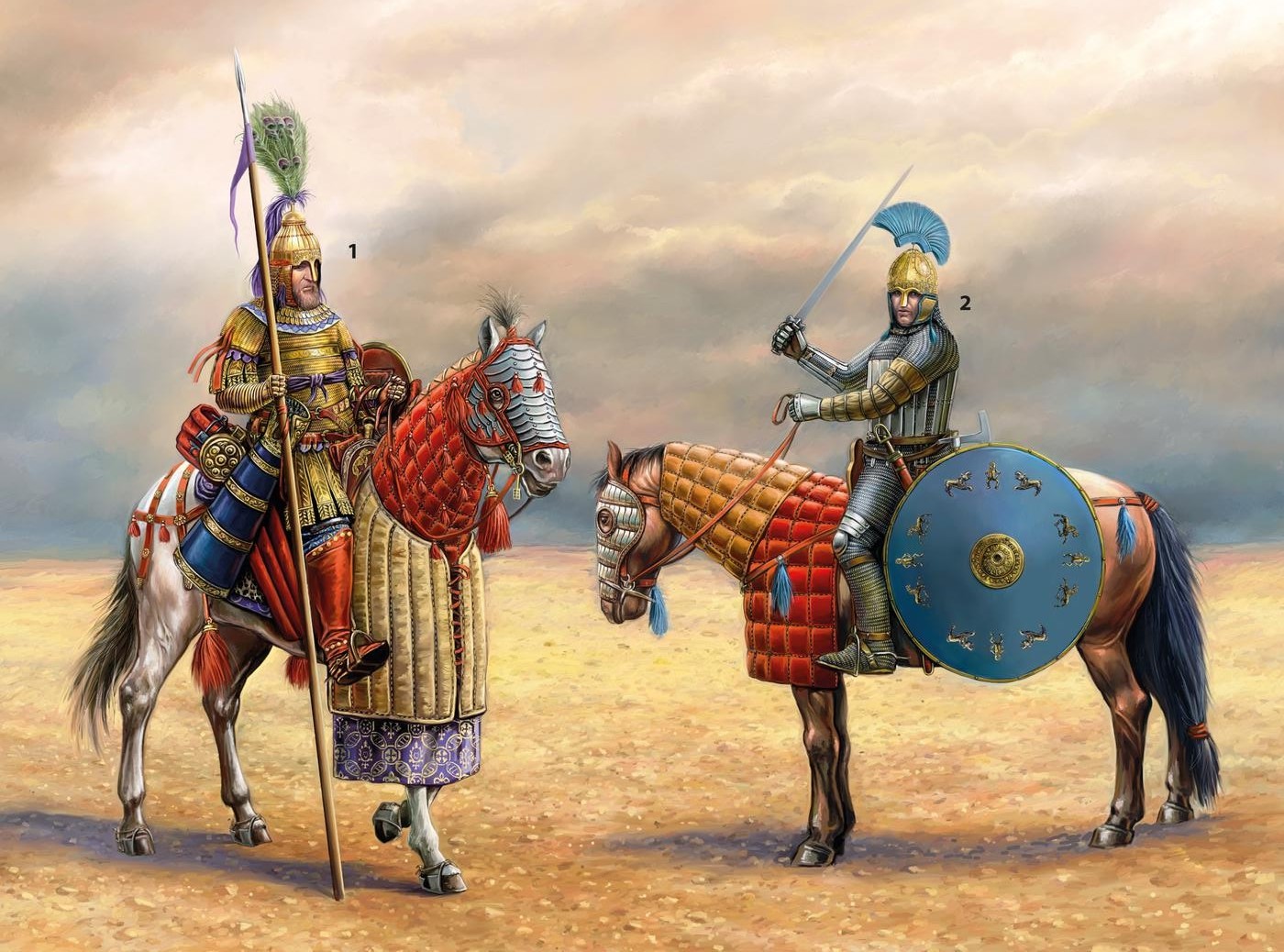
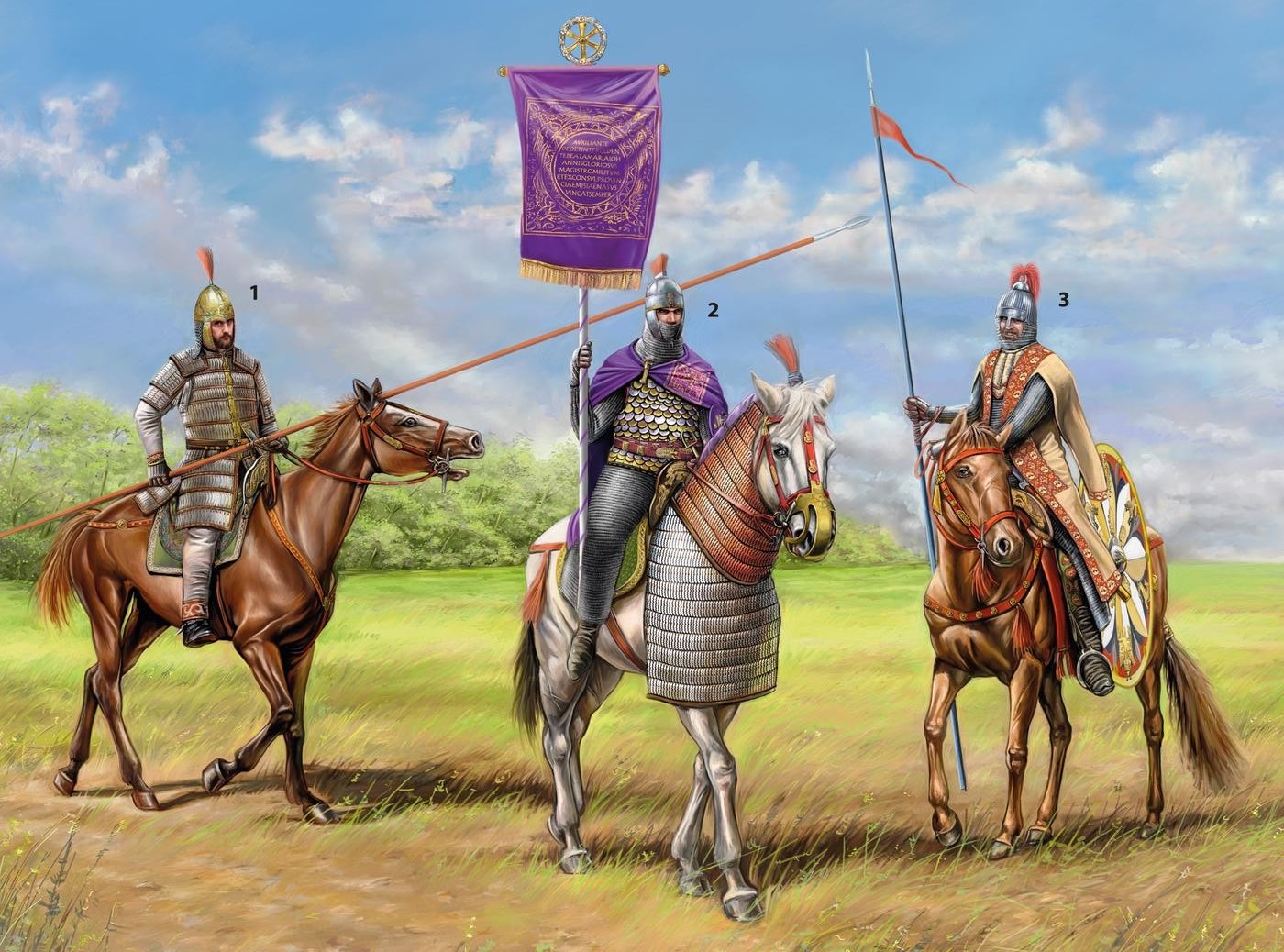


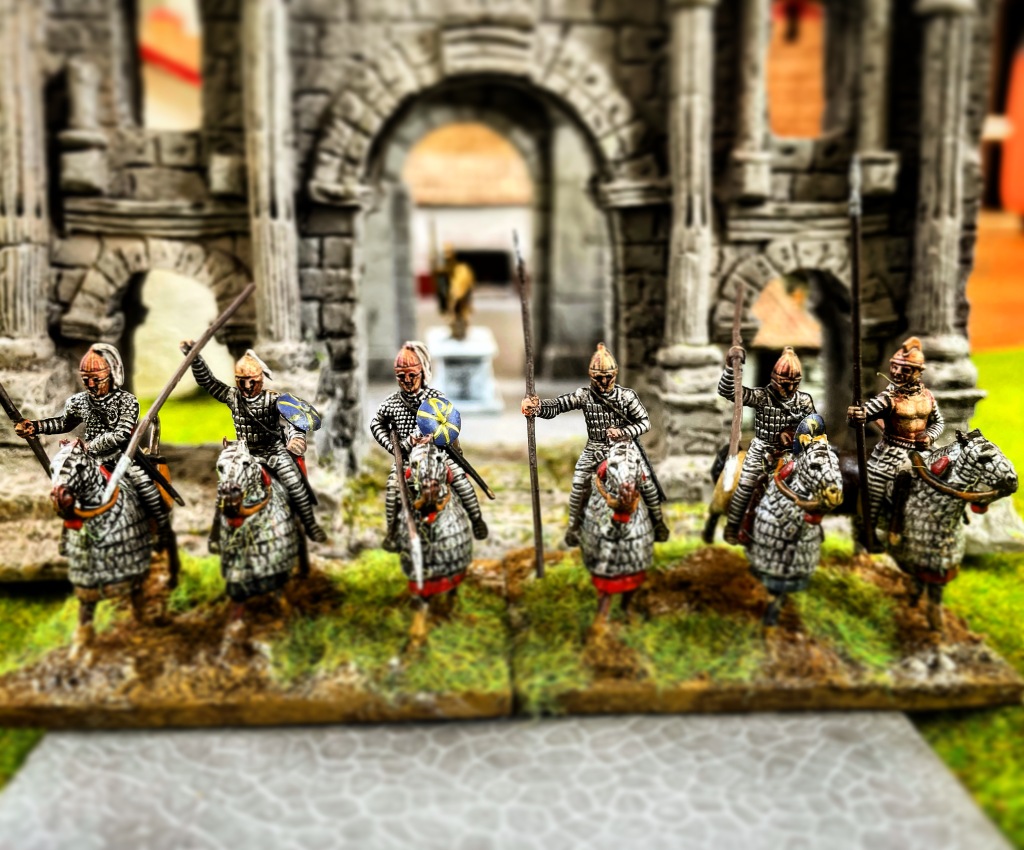


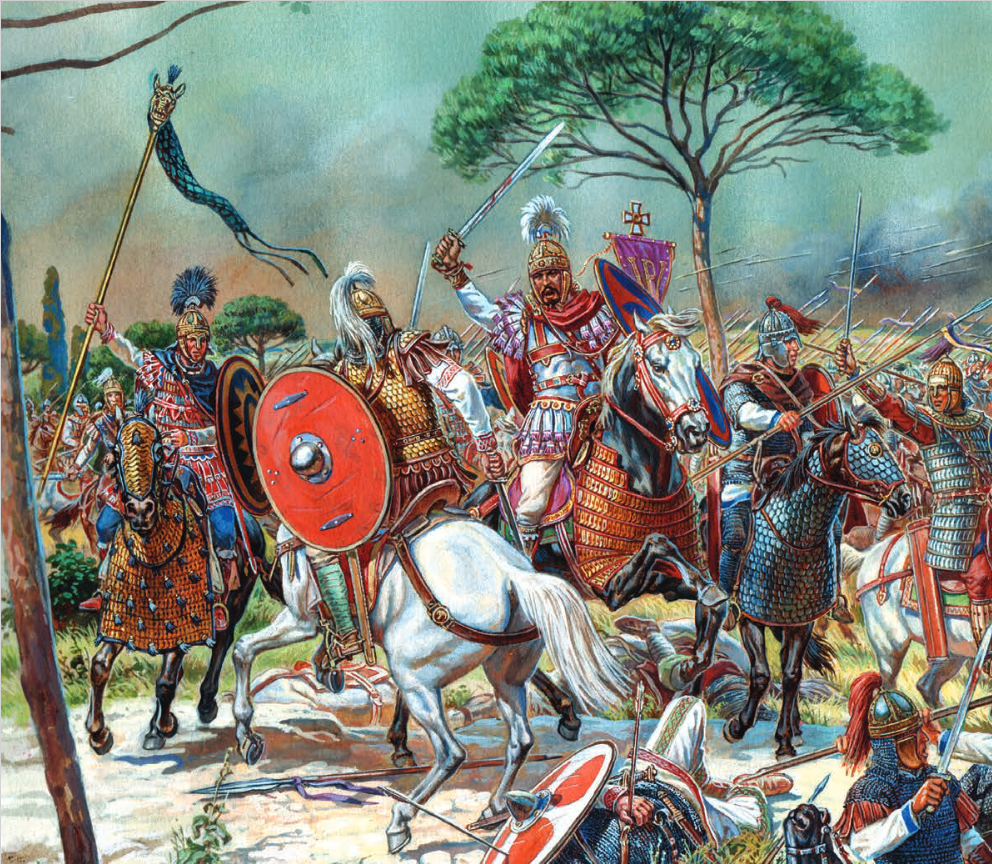







 Supporting Member (Bronze)
Supporting Member (Bronze)



 Moderator
Moderator